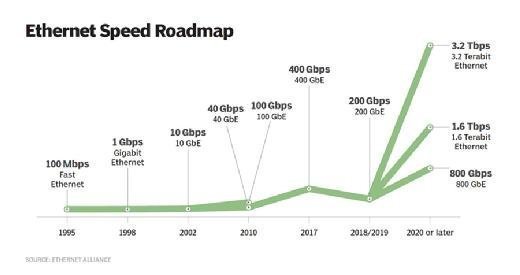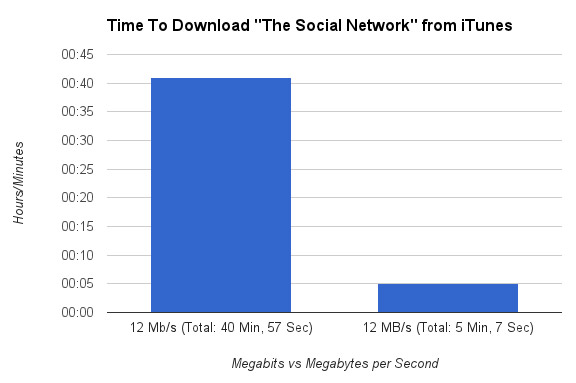Discovering the Relationship Between Megabits Per Second and Download Speeds
Discovering the Relationship Between Megabits Per Second and Download Speeds
Blog Article
Exactly How Megabits Per Second Impact Your Online Activities
The idea of megabits per second (Mbps) plays a critical function fit our online experiences. As digital activities proliferate, recognizing the ramifications of Mbps on streaming, video, and gaming conferencing comes to be increasingly vital. Higher Mbps can boost efficiency and decrease disruptions, while insufficient rates might cultivate frustration and inefficiency. Assessing your household's particular demands in relationship to these rates is important, specifically as numerous tools strive for data transfer. The subtleties of exactly how Mbps affects different online activities call for more expedition, especially as our reliance on digital connection proceeds to advance.
Understanding Megabits Per Second
When thinking about web speed, it's vital to recognize the idea of megabits per second (Mbps), which works as a conventional dimension for data transfer rates. This statistics quantifies exactly how much information can be transferred over a net connection in one second, providing a clear understanding of performance abilities - Megabits Per Second. For context, one megabit amounts to one million bits, and Mbps is generally utilized to reveal transmission capacity for different on the internet tasks
A greater Mbps indicates a faster internet link, allowing customers to do tasks such as downloading files, browsing websites, and engaging in on-line pc gaming extra successfully. For instance, normal surfing needs around 1-5 Mbps, while streaming high-definition video might require 5-25 Mbps. Understanding these needs is vital for establishing the ideal web speed required for particular tasks.
In addition, the variety of devices connected to a network can affect overall performance. Numerous users streaming, gaming, or downloading and install all at once can stress offered data transfer, resulting in slower speeds - Megabits Per Second. Evaluating individual online behaviors and needs is important in choosing an internet strategy that lines up with one's needs, guaranteeing a smooth electronic experience
Streaming and Buffering Issues
Streaming high-def content has ended up being a staple of contemporary online amusement, yet it is often gone along with by frustrating buffering issues. These disturbances can considerably interfere with the checking out experience, leading to dissatisfaction and prospective loss of target market engagement. Buffering takes place when the information transferred from the streaming service is not received promptly sufficient to preserve a smooth playback, typically as a result of insufficient net speed gauged in megabits per second (Mbps)

Additionally, real-time streaming can be affected by network blockage, which happens when several devices share the same bandwidth. Consequently, maximizing link speed and ensuring adequate Mbps is necessary for a seamless streaming experience. As streaming solutions proceed to progress, comprehending the influence of Mbps on buffering problems stays critical for consumers seeking nonstop Discover More home entertainment.
Online Video Gaming Efficiency
The effect of net rate on on-line tasks expands past streaming, significantly influencing online video gaming efficiency. In affordable video gaming, low latency and high data transfer are critical for a seamless experience. A quick connection minimizes lag, allowing players to react promptly to in-game occasions, which can be the distinction in between success and loss.
Data transfer, measured in megabits per second (Mbps), plays an important role in supporting several tools and pc gaming systems at the same time. Not enough bandwidth can lead to went down links or lowered video game high quality, negatively influencing gameplay. On-line multiplayer video games need significant data transfer, specifically during peak video gaming hours when numerous players are online.
Fast-paced first-person shooters require greater speeds to keep responsiveness, while turn-based method video games might work reasonably well on lower rates. As online pc gaming proceeds to develop, with increasing graphical fidelity and more complex multiplayer atmospheres, the need for higher Mbps will only intensify.
Video Conferencing High Quality
In today's digital landscape, video conferencing high quality is greatly affected by internet speed, particularly in terms of bandwidth and latency. Premium video calls require enough bandwidth to transfer sound and video data effortlessly. Usually, a minimum of 1.5 Mbps upload and download speeds is recommended for standard meaning video, while high-def video conferencing normally requires at the very least 3 Mbps.
Latency, or the hold-up in between sending out and receiving data, also plays a crucial role in the individual experience. Greater latency can lead to resemble, lag, and disjointed communications, which can prevent collaboration and engagement throughout conferences.
In addition, multiple participants in a video clip conference can strain available data transfer, requiring even greater rates. Network congestion, commonly caused by simultaneous activities like streaming or downloading, can even more degrade video quality. Hence, for companies depending on video conferencing for remote collaboration, recognizing the relationship between megabits per second and general communication high quality is important for maintaining efficiency and boosting digital interactions.
Selecting the Right Internet Plan
Selecting an ideal internet strategy is critical for making sure optimal efficiency in various on the internet activities, especially in settings that require high transmission capacity, such as video conferencing and online gaming. Megabits Per Second. When considering an internet plan, it is essential to review both the rate and information allocation to match your details use needs
For homes with several customers participating in simultaneous activities, a strategy supplying higher megabits per second (Mbps) is recommended. go to this website Normally, a minimum of 25 Mbps appropriates for conventional streaming and browsing, while plans surpassing 100 Mbps are preferable for more extensive jobs. Furthermore, take into consideration the nature of your online tasks; video conferencing needs at least 1.5 Mbps submit speed, while on the internet pc gaming might require a lower latency but consistent connection.
Unlimited information plans can avoid strangling and disruptions, especially if hefty use is expected. By attentively choosing a net strategy tailored to your demands, you can improve your on-line experience, guaranteeing smooth, uninterrupted access to your preferred tasks.
Verdict
Finally, the significance of megabits per second (Mbps) fit on the internet activities can not be overstated. Higher Mbps assists in smooth streaming, minimizes buffering, enhances gaming experiences, and makes certain top quality video clip conferencing. On the other hand, insufficient data transfer can bring about discouraging disturbances and decreased performance across different jobs. A complete understanding of individual or family Mbps demands is crucial for choosing an ideal net strategy that sufficiently supports varied online tasks and individual demands.

Typically, a minimum of 25 Mbps is suitable for basic streaming and surfing, while strategies surpassing 100 Mbps are more suitable for even more extensive tasks. Additionally, consider the nature of your online activities; video clip conferencing calls for at least 1.5 Mbps upload speed, while on the internet video gaming may need a lower latency however constant connection.
Report this page